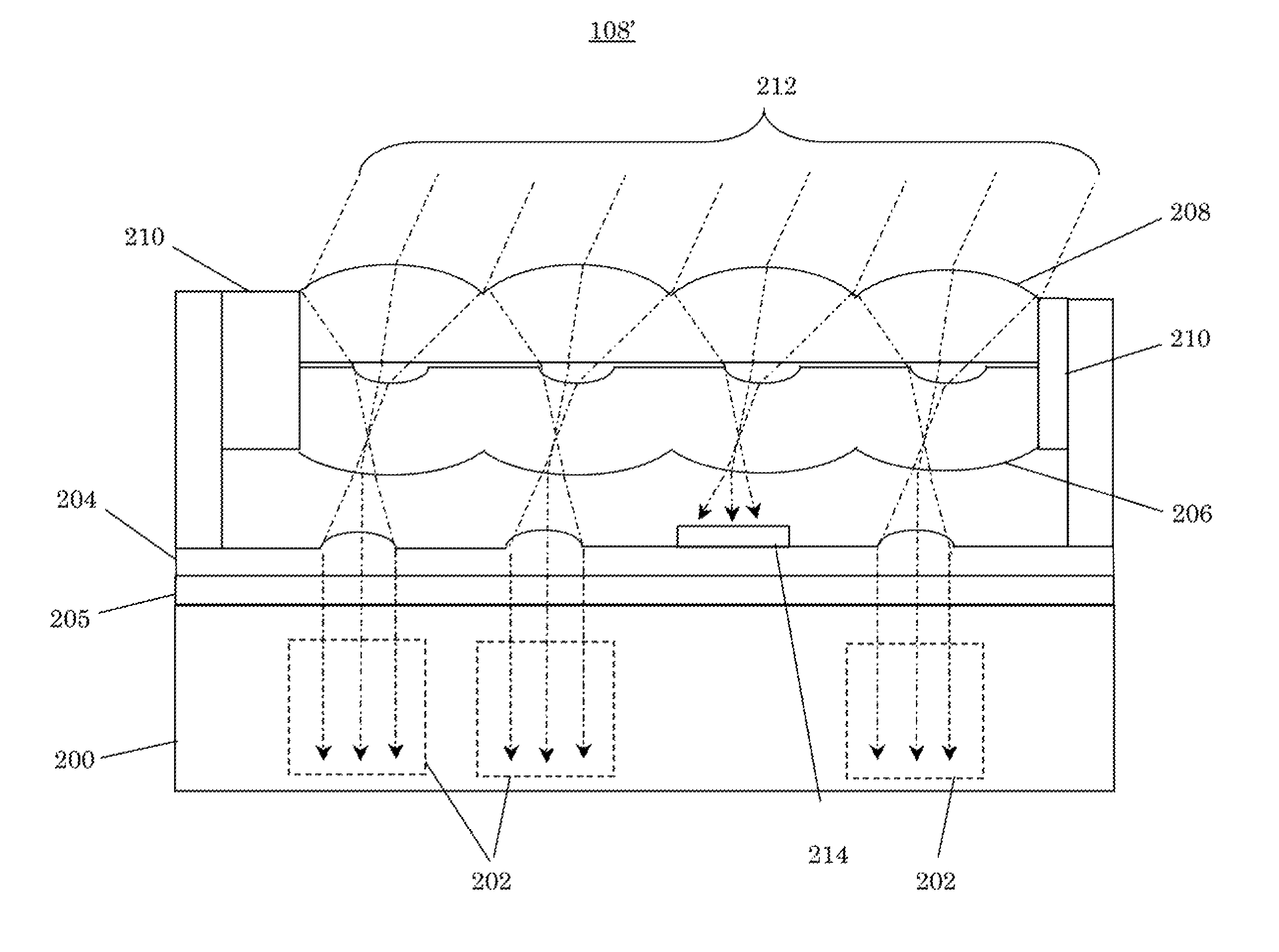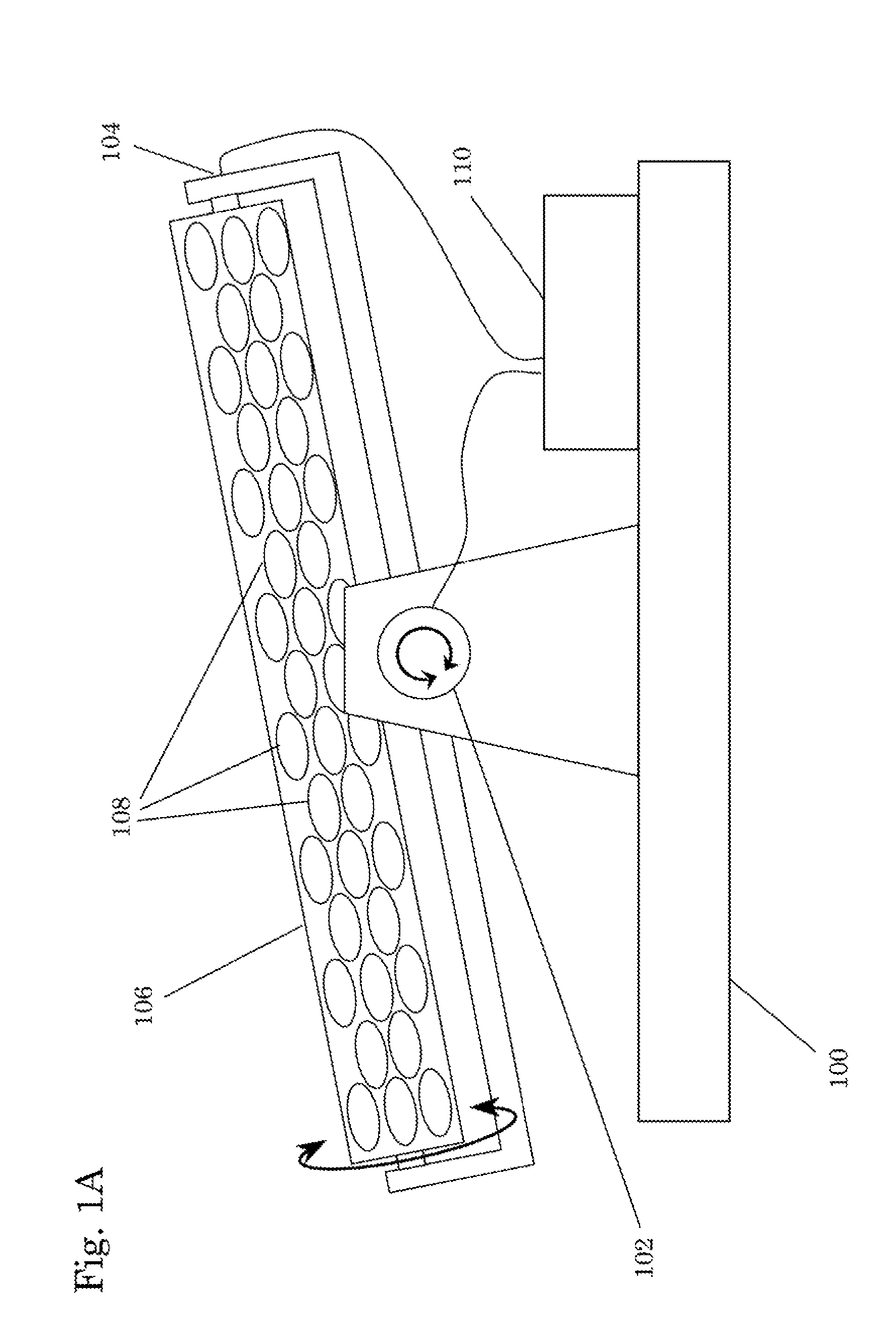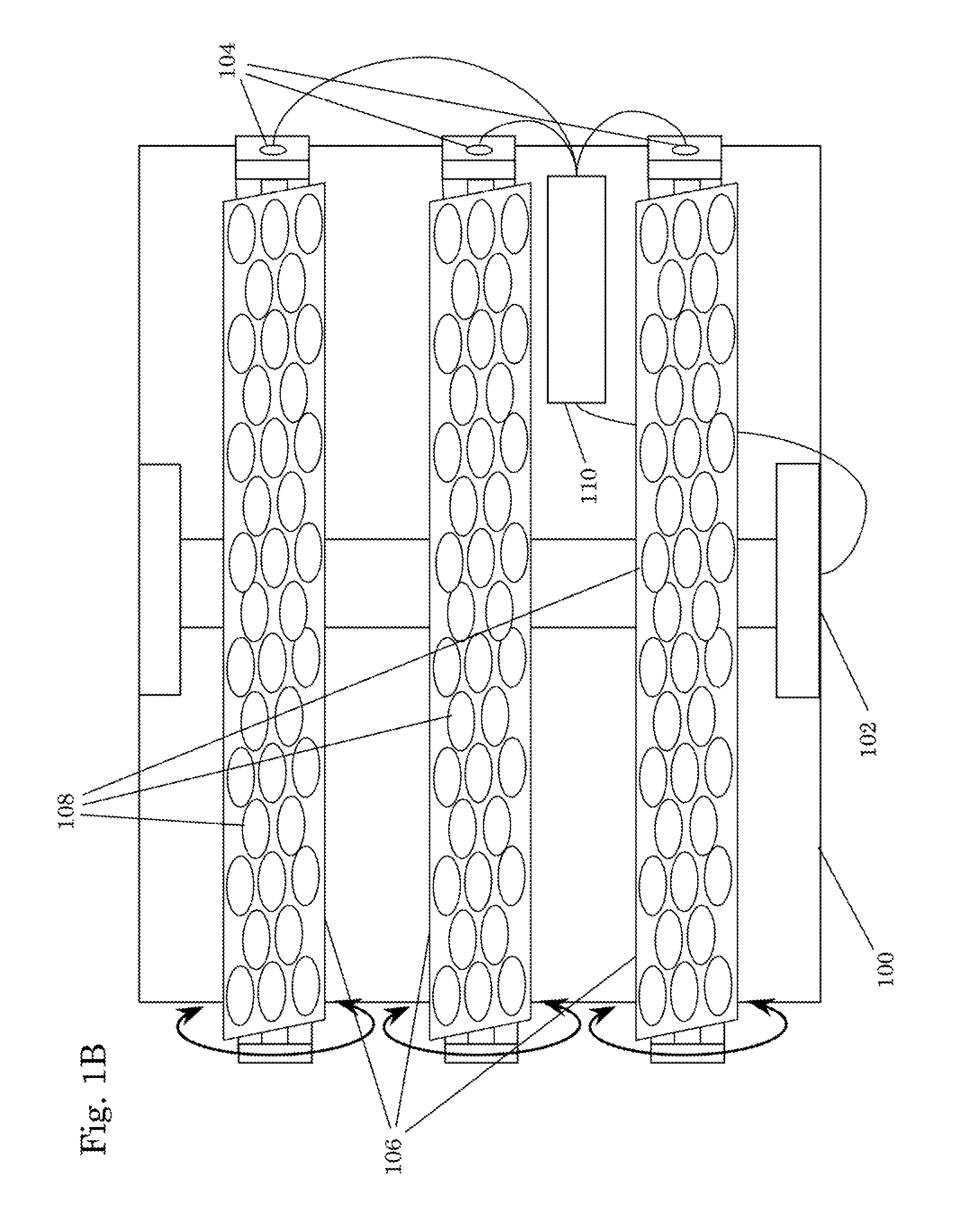Microsystem enabled photovoltaic modules and systems
a photovoltaic module and micro-system technology, applied in photovoltaic supports, pv power plants, lighting and heating apparatus, etc., can solve the problem that the photovoltaic system is not competitive with fossil fuel generated electricity
- Summary
- Abstract
- Description
- Claims
- Application Information
AI Technical Summary
Benefits of technology
Problems solved by technology
Method used
Image
Examples
Embodiment Construction
[0018]Exemplary embodiments of the present invention include photovoltaic (PV) solar energy systems that include PV modules that include micro-optical elements to provide for accurate solar tracking. FIGS. 1A and 1B illustrate an exemplary PV solar energy system according to the present invention. FIG. 1A illustrates the exemplary system from a side view and FIG. 1B illustrates the same exemplary system from above.
[0019]The exemplary PV modules used in exemplary PV solar energy system according to the present invention include arrays of individual PV elements. The use of individual PV elements in these exemplary PV modules may help to improve the efficiency and thermal management of the exemplary PV solar energy systems.
[0020]The dimensions of the exemplary micro-optical elements are affected based on the desired size of the PV elements, but are desirably tiled to cover the surface area of the exemplary PV modules as efficiently as possible, typically using either a square or hexago...
PUM
 Login to View More
Login to View More Abstract
Description
Claims
Application Information
 Login to View More
Login to View More - R&D
- Intellectual Property
- Life Sciences
- Materials
- Tech Scout
- Unparalleled Data Quality
- Higher Quality Content
- 60% Fewer Hallucinations
Browse by: Latest US Patents, China's latest patents, Technical Efficacy Thesaurus, Application Domain, Technology Topic, Popular Technical Reports.
© 2025 PatSnap. All rights reserved.Legal|Privacy policy|Modern Slavery Act Transparency Statement|Sitemap|About US| Contact US: help@patsnap.com



